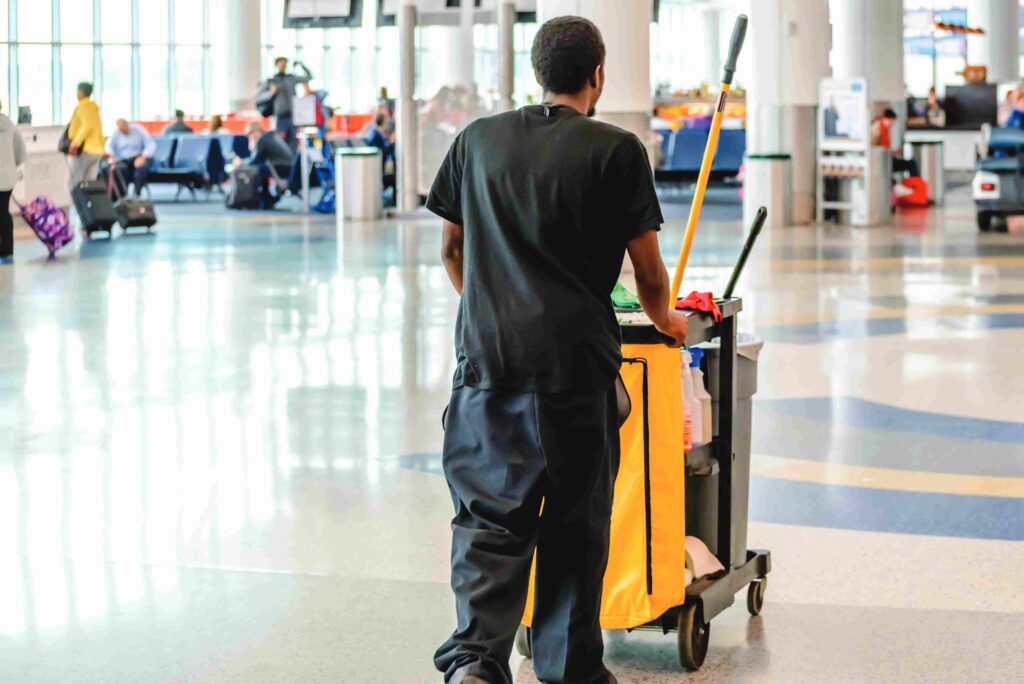
When people think of airports, they imagine terminals, security checks, flight schedules, and continuous announcements. Rarely does one consider the team working behind the scenes to ensure that every square foot of this vast infrastructure remains clean, safe, and operational with precision, Ankur Sachdev, CEO, Tenon FM (Tenon Group)
Since 2017, we have been delivering integrated facility management (IFM) services at one of India’s largest and most
operationally complex airports— managing housekeeping across Terminals T2 and T3, as well as airside, landside, and administrative zones.
Managing an airport is an exercise in balancing intensity with invisibility. The expectation is to be present everywhere yet remain unnoticed. The environment is high-pressure, but the delivery must be consistent and calm.
High Footfall, Zero Tolerance for Failure
Airports operate round the clock, with no closures or downtime. Housekeeping services must match this continuity. One of the
initial challenges was managing uninterrupted passenger flow, particularly during peak hours and periods of international arrivals and departures.
To address this, we implemented a zonal cleaning model supported by shift-based manpower allocation and real-time monitoring through our technology platform. Ground supervisors responded dynamically to surges in footfall, maintaining
cleanliness even during the busiest periods.
Airside Operations: Where Cleanliness Meets Safety
Airside zones pose distinct challenges. A single piece of debris, categorised in aviation as FOD (Foreign Object Debris), can
compromise aircraft safety. Airside operations require AEP-cleared personnel, close coordination with air traffic control, and exacting standards.
Our teams underwent specialised training and participated in routine safety drills conducted with airport authorities. Cleaning in this environment was not merely a matter of appearance but one of operational safety.
Compliance: Non- Negotiable and Constant
Facility operations within an airport involve adherence to multiple regulatory frameworks, including HSE, DGCA, and BCAS among them. Compliance is not a task to be completed; it is a culture to be followed.
Teams maintained complete documentation readiness and received continuous training in safety norms and aviation
protocols. From emergency response procedures to audit preparedness, each team member understood the expectations and
consequences.
Being Ready When It Matters Most
Airports are dynamic ecosystems. They experience VIP movements, weather-related disruptions, flight delays, and occasionally, national emergencies. Facility staff must be able to adapt immediately. We established multi-skilled rapid response teams and maintained a trained reserve workforce prepared to step in without delay.
High-efficiency tools and emergency kits were mobilised as needed.
Managing Human Capital in a High-Control Zone
Staffing presents its own challenges, particularly due to security clearance requirements and the time-consuming onboarding
process. Delays in badge issuance and attrition can affect continuity. To address this, we developed a pre-vetted reserve pool of resources and worked closely with the airport operator to expedite AEP processing wherever possible.
Digital SLAs, Human Accountability
Managing such a critical facility involves multiple stakeholders, CISF, terminal management, and airline operators. Clear communication is vital. We introduced digital checklist systems for real-time SLA tracking and appointed dedicated zone managers to maintain ownership and accountability at ground level. Our model is enabled by technology but led by people.
This combination ensures operational scalability while staying anchored in daily realities.
More Than Maintenance — A Strategic Role
Airport facility management is not merely about cleanliness; it is a contributor to public experience, national image, and operational reliability. Our engagement at this airport has demanded agility, regulatory understanding, and service
delivery informed by context. Facility management in high-sensitivity environments is about anticipating needs
before they emerge and responding with measured precision. It is about bringing order to complexity quietly,
reliably, and without becoming a source of disruption.
 CIJConnect Bot-enabled WhatsApp
CIJConnect Bot-enabled WhatsApp









